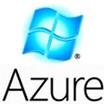○WHAT IS WINDOWS AZURE?
At its recent Convergence conference Microsoft (NSDQ:MSFT)unveiled plans to develop cloud versions of its Dynamics ERPapplications by adapting them to run on the company's Windows Azure cloud computing platform.
At its recent Convergence conference Microsoft (NSDQ:MSFT)unveiled plans to develop cloud versions of its Dynamics ERPapplications by adapting them to run on the company's Windows Azure cloud computing platform.
Azure has been available since Feb. 1, 2010 and Microsoft has been promoting it as the cloud development platform for ISVs and partners. Some observers noted the irony that it took Microsoft more than a year to commit to developing its own applications on Azure -- that's a long time to wait to eat your own dog food, as it were.
It's too early to say whether Azure will succeed in the market place. There have been posted reports of customers discontinuing their Azure subscriptions and of Microsoft paying ISVs to port their applications to the Platform-as-a-Service (PaaS) system. In February Microsoft offered cloud programmers a free trial of Windows Azure in an effort to boost interest in the development platform.
Other red flags: In January CEO Steve Ballmer ousted Bob Muglia from his job overseeing the company's $15-billion Server and Tools Business, of which Azure is part, in what some viewed as Ballmer's dissatisfaction with the company's cloud progress. Even more ominous was the February departure of Amitabh Srivastava, a senior vice president in the Server and Tools Business who played a central role in developing Windows Azure.
Microsoft won't disclose how many Azure subscribers it has or how many developers are working with the platform. (Microsoft, in fact, did not provide an executive to comment for this story, instead providing written answers to questions through a spokesperson.)
Some Microsoft partners, nevertheless, have eagerly embraced Azure. "All of our applications, all of our intellectual property, we're developing on top of the Azure platform," said Aaron Nettles, CEO of Vorsite, a Seattle-based solution provider that's building its business around Microsoft's cloud offerings.
While Vorsite does resell Microsoft cloud products such as the Intune cloud-based PC management system and Business Productivity Online Suite (BPOS) applications, Nettles expects the bulk of the company's revenue to come from Azure-based custom applications and services. "It's exciting stuff," he said.
Others are taking a more cautious approach. "We're still figuring it out," said Dave Sobel, CEO of Evolve Technologies, a Microsoft partner in Fairfax, Va. Microsoft appeared to focus its initial Azure marketing efforts on developers and is just now starting to educate channel partners and IT managers about what they can do with it, he said.
Azure is a core element of Microsoft's cloud computing efforts and, as Ballmer said in his Convergence keynote, "Make no mistake, when it comes to the cloud, Microsoft's all in." So it's a fair assumption that Microsoft will do whatever it takes for Azure to be accepted by customers, channel partners and ISVs. And that means solution providers ignore Azure at their own peril.
"My sense is that it's still early days and the numbers are nowhere near where they will be when things are in full swing," said Andrew J. Brust, CTO at Tallan, a Microsoft gold partner, and CEO of Blue Badge Insights, a strategy consulting and advisory service company for Microsoft customers and partners. "What I can say is that the whole of Microsoft, including product groups that are otherwise separate and heterogeneous, are focused on this and it's going to happen."
○WHAT`S WINDOWS AZURE IS MADE FOR:
For the uninitiated, Azure is Microsoft's Platform-as-a-Service system for developing, testing, deploying and maintaining cloud applications. It's Microsoft's response to competing cloud development platforms such as Google's App Engine, Amazon's Elastic Beanstalk, Salesforce.com's Force.com, and startups such as AppHarbor.
Hosted by Microsoft within its data centers, Azure includes the Windows Azure cloud operating system, SQL Azure cloud database, and Windows Azure AppFabric services -- the latter essentially cloud middleware that supports both on-demand and on-premise applications. Azure is integrated with Microsoft's Visual Studio development toolkit, allowing programmers to use it as the integrated development environment for developing and publishing Azure-hosted applications.
In late March, Microsoft released the Windows Azure Toolkit for Windows Phone 7 for building Windows Phone 7 applications that use services running on Windows Azure.
Because Azure relies on Microsoft's own database system, some developers worry about vendor lock-in. And the Azure platform doesn't support Git, a free, distributed revision control system many developers use for collaboration and code deployment.
Microsoft updates the Azure platform every few months and the company's ultimate goal for Azure (and, in fact, for all its cloud offerings) is to achieve functional parity with its on-premise offerings. Microsoft's view is that for the immediate future many businesses will take a hybrid approach to IT, using a mix of cloud and on-premise systems. That's why core Microsoft software such as Visual Studio and .NET for development and System Center for management can be used across both types of systems.
Azure is hosted in Microsoft data centers, but the company touts the opportunities the Azure PaaS offers channel partners. VARs can sell and support the Azure service and manage customer relationships while ISVs can use Azure to deliver their Software-as-a-Service applications directly to their customers. Hosting partners can use Azure to deliver software such as customized SharePoint. And systems integrators can set up, integrate and connect cloud-based services with other SaaS applications and on-premise systems.
Microsoft has a number of new Azure services and features in the development pipeline. By mid-year, for example, Microsoft will offer SQL Azure Reporting for embedding reports within Windows Azure applications. That capability is now available as a Community Technology Preview. Another key technology building block in CTP stage and due later this year is SQL Azure Data Sync, tools for building applications with geo-replicated SQL Azure data that synchronizes on-premise applications with cloud and mobile applications.
Also due for a CTP release by mid-year is Windows Azure Content Delivery Network for IIS (Internet Information Services) Smooth Streaming, technology for building media streaming capabilities into Azure apps.
The Azure ecosystem also includes Windows Azure Marketplace where developers and IT professionals can buy, sell and share software components, services and training for completing Azure applications. The Marketplace includes Azure Datamarket where developers and information workers can acquire third-party data, Web services, and self-service business intelligence and analytics they can incorporate into Azure applications.
○The Channel View Of Azure:
"The gaps that were in the initial Azure offering are getting filled, and rapidly," said Brust, at Blue Badge Insights. One area that he said will need work is better integration between Azure and Microsoft's upcoming Office 365 cloud applications, which are not built on the Azure platform.
One area where things might not be progressing so smoothly isMicrosoft's effort to co-develop Azure appliances with Dell, Hewlett-Packard and Fujitsu. The idea is that the pre-configured hardware-software bundles will make it easier for solution providers and customers to assemble private cloud systems. Microsoft announced the appliances at its Worldwide Partner Conference last July, saying they would be available by year's end. But they have yet to make an appearance.
Microsoft has had some high-visibility Azure successes lately. On Feb. 1, the one-year anniversary of Azure's launch, T-Mobile USA said it chose Windows Azure and SQL Azure to develop its Family Room mobile application that lets families share photos and coordinate activities. Xerox announced that it had developed its Xerox Cloud Print cloud-based managed printing services for the Azure platform.
Still, many businesses today are looking for easy-to-implement SaaS applications (in the Salesforce.com mode) rather than more complex cloud platforms like Azure, said Evolve Technologies' Sobel. "Customers are not coming out and saying "I want Windows Azure.'"
Microsoft continues to expand adoption of Azure among its partner base. In early April, at the National Association of Broadcasters show Microsoft unveiled plans to create a partner ecosystem specifically to develop Azure-based solutions for the media and entertainment industry.
Software companies and ISVs are beginning to embrace Azure as well. OpenText recently bragged that its Metastorm M3 enterprise architecture and business process management application is the first Azure-based software in that category to be certified under the Powered by Microsoft Windows Azure program. And Acumatica has adapted its SaaS ERP and CRM applications to run on Azure -- beating out Microsoft's efforts to adapt its own Dynamics ERP andCRM apps for Azure.
"The Azure stuff is fast. We're impressed with how fast it is," said Greg Milliken, president of Motive Systems, a Dallas-based Microsoft gold ISV. At Convergence Motive was showing an Azure-native implementation of its M-Files document management software -- meaning the application was developed from scratch to run on Azure and wasn't just adapted for the cloud platform. "It takes the customer deployment to a simpler level," Milliken said of Azure.
Building applications and services on Azure could be "a great way to engage customers," Sobel said. His verdict: "I think Azure's success is going to be measured not by sales numbers, but by customer success stories."






